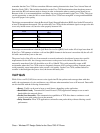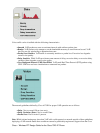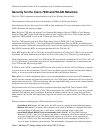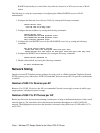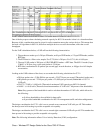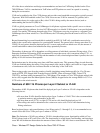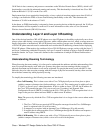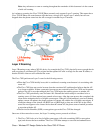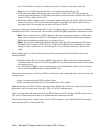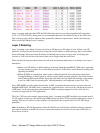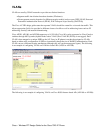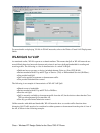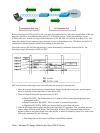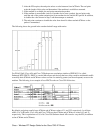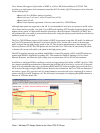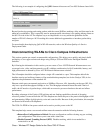this AP. If either the association or authentication fails, it continues to try the next best AP.
Note: As a Cisco 7920 roams between APs, it re−authenticates with each new AP.
AP B sends a null MAC multicast using the source address of the Cisco 7920. This updates the
Content Addressable Memory (CAM) tables in upstream switches and directs further LAN traffic for
the Cisco 7920 to AP B, and not AP A.
2.
AP B sends a MAC multicast using its own source address telling the old AP that AP B now has the
client associated to it. AP A receives this multicast and removes the client MAC address from its
association table. This message uses the Inter−AP Protocol (IAPP).
3.
In trying to determine potential candidate APs for Layer 2 roaming, the Cisco 7920 uses several variables to
determine the best AP to associate with. The variables are RSSI and QBSS. Definitions of these terms follow:
RSSI This is used by the Cisco 7920 to determine the signal strength and quality of available APs
within an RF coverage area. The Cisco 7920 attempts to associate with the AP that has the highest
RSSI value (and matching authentication or encryption Type).
•
QBSS This is a beacon Information Element (IE) that allows the AP to communicate the Channel
Utilization (CU) to the Cisco 7920. The Cisco 7920 uses the QBSS value to determine if it should
attempt to roam to another AP, as APs with high CU may not be able to effectively handle VoIP
traffic.
•
When roaming, the Cisco 7920 uses the following model to determine which AP should be used as the
handoff candidate:
Determine which APs are advertising QBSS in their beacons. These should be considered handoff
candidates before APs that are not advertising QBSS. If any of these meet the threshold criteria, begin
the roaming process.
1.
If no APs advertise QBSS, or those advertising do not meet the threshold criteria, look for APs that
are not advertising QBSS but have acceptable RSSI levels.
2.
The amount of time it takes for the Cisco 7920 to roam between APs is dependent on the security model used
(average times):
Layer 2 roaming with static WEP: less than 100ms.•
Layer 2 roaming with LEAP (local ACS authentication): 200 to 400ms•
Note: Delay times with LEAP could be longer than 200 to 300ms if the ACS server is heavily used by other
applications (such as remote access dial−up or VPN, or TACACS authentication).
Layer 2 roaming time is the time between the last RTP packet seen on AP1 and the first RTP packet seen on
AP2. It also includes the times it takes to re−authenticate and reassociate with AP2.
The following image shows a sample trace of a Cisco 7920 roaming to a new AP and the LEAP messaging
that is between the Cisco 7920 and the AP:
Cisco − Wireless IPT Design Guide for the Cisco 7920 IP Phone



